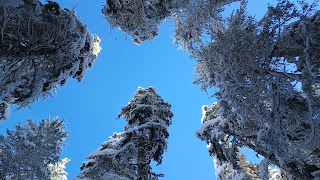Restorative Yoga: A Healthy Practice for a Healing Body
Quite a while ago, in what feels like a former life, I was very active in yoga. I trained as a Christian Yoga Instructor and I taught several times a week between my church and the local YMCA. I was even looking into opening our own studio with several instructor friends right as COVID came down, which nipped that dream in the bud. It turned out to be a good change of direction because my health began to take a downturn at the same time. It was around then, after several serious connective tissue tears, that I was diagnosed with EDS. I had to go through a season of relearning my body and it’s true limits, not the perceived ones that my hypermobility had taught me. Next, of course, came my brain tumor. All this to say, it was not a great time for me to be starting a business!
I am happy to report though that, with the help and guidance of my physical therapist, I have been able to dip my toes back into a personal yoga practice. I’ve started with the gentlest form I know, Restorative Yoga. In this form, you find gentle positions that are assisted with lots of props like pillows, bolsters, and blankets, and hold them for long times so that your body melts into them. It allows stiff, locked up joints to slowly release. When done properly it also doesn’t stress muscles or ligaments, but you have to know your body and its healthy limits. Before I knew about my EDS I would do these positions to the outer extremes of what my hypermobile body would allow. Now I find the place that allows a gentle opening of the joint but doesn’t put undue stress on it.
My physical therapist and I have put together a routine that I use 4-5 times a week to help open my spine and gently stretch my hamstrings, some of my tightest areas. I’ve found this book to be the best resource out there on Restorative Yoga. It breaks down how to set up and get into and out of poses very clearly with lots of pictures. That’s great for a visual learner like me!
In case you’re interested in trying it out for yourself, I’ll share with you one of my favorite poses, legs up the wall. It is very simply what it sounds like, swinging your legs up the wall in front of you! To make this pose more restorative, I have a few recommendations. To start with, there are a few ways to make it so that you don’t feel like you’re holding your legs up. If you have a yoga strap laying around, you can put a loop in that and loop it around your legs about hip width apart.
If not, you could use a belt or a bathrobe tie. Another option is to use a pillow case with or without a pillow in it. You could just grab the pillow off your bed and slide your feet into the opening and then swing them up onto the wall. I like to do this with the pillow between my feet and the wall but see what you like best.
Another way to support this pose is by sliding your bottom a little away from the wall. This lessens the stretch to your hamstrings if it is too intense. You can also put a folded blanket or pillow under your hips to soften the work in your pelvis. I like to put a folded blanket or pillow under my head and my first choice is to do this pose on the hard wood floor if I can. This helps realign my spine and work out any knots in my back. Warning though, it can feel pretty intense! To start with, you’ll want to hold this pose up to about five minutes, but as you get used to it you can work up to 10-20. The way this changes up the circulation in your body it can be very invigorating, taking the place of a good long nap. I don’t recommend doing this pose right before bed!
Here's the thing: When I was diagnosed with EDS I thought that was the end of yoga for me. It turns out I just needed to get to know my body and how God had made me better. I’m really glad to have this healthy, restful practice that helps my body feel so much better and gives me time for worship, reflection and prayer.







Comments
Post a Comment